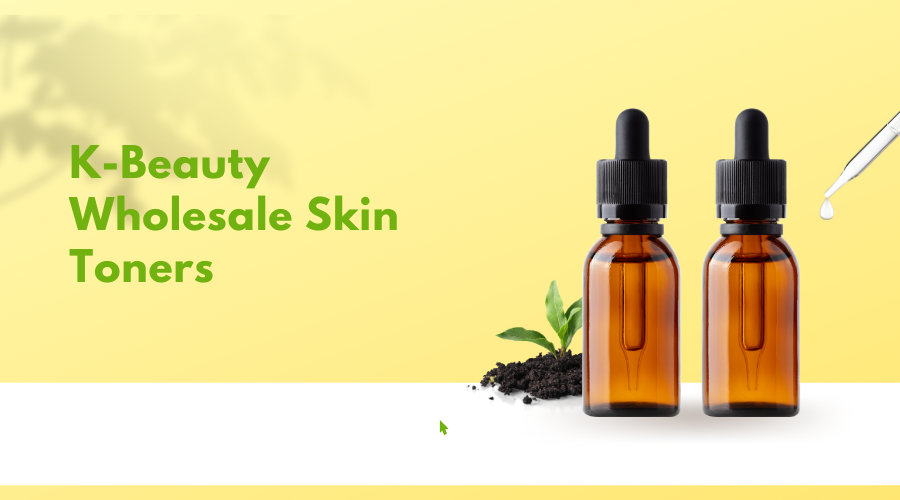Exfoliation 101: How Often Should You Use a Face Scrub?
- healthybeautykr
- Apr 17
- 4 min read
Updated: Jun 4

Let’s talk about something your skin really wants to tell you—you need to exfoliate. Whether you're battling dullness, breakouts, or uneven skin texture, adding a good face scrub to your routine can be a total game-changer. But here’s the million-dollar question: how often should you use a face scrub?
It turns out, there’s no one-size-fits-all answer. Your skin type, the kind of scrub you're using, and your lifestyle all play a role in how often you should exfoliate. In this guide, we’ll break it all down for you—without the fluff—so you can finally nail your exfoliation routine and get that smooth, glowing skin you deserve.
What Exactly Does Exfoliation Do?
Exfoliation is the process of removing dead skin cells from the surface of your skin. These dead cells can clog pores, dull your glow, and make your skin look tired. When you exfoliate, you’re essentially polishing your face, revealing fresher, younger-looking skin underneath.
Types of Exfoliation: Physical vs. Chemical
Before we dive into frequency, it's important to understand that there are two main types of exfoliation:
1. Physical Exfoliation: This includes face scrubs with gritty particles like sugar, salt, crushed seeds, or microbeads. You physically massage them into your skin to slough off the dead cells.
2. Chemical Exfoliation: This uses acids like AHAs (alpha hydroxy acids) or BHAs (beta hydroxy acids) to gently dissolve dead skin. These exfoliants work on a deeper level and can be ideal for certain skin types.
Why Face Scrubs Are Still Relevant
While chemical exfoliants have become trendy, face scrubs still hold their ground. When used correctly, they can give an instant smoothness that’s hard to beat. They're also great for a deep-clean feeling after a long day, especially if you wear makeup or live in a polluted area.
So, How Often Should You Use a Face Scrub?
Here’s where it gets specific. The frequency of exfoliation depends on your skin type, scrub ingredients, and how your skin reacts. Let’s break it down by skin type:
Normal Skin: 2–3 Times a Week: If your skin isn’t overly oily or sensitive, congratulations—you have more flexibility. Exfoliating two to three times a week helps maintain a fresh and glowing complexion. Just don’t overdo it.
Oily Skin: 3–4 Times a Week: Oily skin tends to produce more sebum, which can trap dead skin and lead to breakouts. A slightly more frequent exfoliation—up to four times a week—can help keep pores clean. Use a scrub with ingredients like salicylic acid or charcoal for best results.
Dry or Sensitive Skin: 1–2 Times a Week: This skin type is more delicate, so go easy. Look for cream-based scrubs with gentle exfoliants like oatmeal or jojoba beads. Scrubbing too often can cause flaking, redness, or irritation—so stick to once or twice a week, max.
Combination Skin: 2–3 Times a Week: Combo skin can be tricky, so the key is to target oily areas (like your T-zone) and be gentle on drier spots. You can even multi-mask or spot-exfoliate if needed.
Mature Skin: 1–2 Times a Week: Aging skin loses moisture more easily, so over-exfoliating can lead to increased dryness and fine lines. Choose a mild exfoliator with hydrating ingredients and stick to once or twice a week.
Signs You're Over-Exfoliating
Using a face scrub too often can backfire. Watch out for these red flags:
Tightness or discomfort after exfoliating
Increased sensitivity or redness
Peeling or flaky patches
Breakouts or inflammation
A shiny but rough texture
If you notice any of these, dial it back immediately. Your skin barrier might be compromised and needs time to heal.
How to Exfoliate the Right Way
Believe it or not, technique matters just as much as frequency. Here’s how to do it properly:
Start with a clean face
Use a dime-sized amount of scrub
Massage gently in circular motions—don’t scrub like you're cleaning a pan
Focus on areas that need it most: nose, chin, forehead
Rinse with lukewarm water and pat dry
Always follow up with a moisturizer to lock in hydration
When’s the Best Time to Use a Face Scrub?
It depends on your routine, but generally:
Morning exfoliation can help you start the day fresh and glowing
Night exfoliation removes the day’s grime and preps your skin for overnight treatments
Pick whatever works best for your lifestyle. Just don’t do it both morning and night—you’ll risk overdoing it.
Choosing the Right Face Scrub
With so many options out there, it’s easy to get overwhelmed. Here's what to look for:
For acne-prone skin: Salicylic acid, tea tree oil, charcoal
For dry skin: Cream-based with hydrating ingredients like glycerin or hyaluronic acid
For sensitive skin: Fragrance-free, gentle beads like jojoba or oatmeal
For dull skin: Vitamin C, fruit enzymes, or AHAs
Stick to products that are non-comedogenic and dermatologically tested.
Can You Use a Face Scrub Alongside Other Exfoliants?
Yes, but with caution. If you’re using chemical exfoliants like AHAs or BHAs, avoid scrubbing on the same day. Your skin needs time to recover between treatments.
Alternate days between physical and chemical exfoliation if you want to include both in your routine. And always, always wear sunscreen, especially after exfoliating.
Conclusion
Here’s the takeaway: exfoliation is essential, but only when done right. Using a face scrub too often can hurt more than help, while the right frequency can work wonders on your glow and texture.
Listen to your skin. Start slow, monitor how it reacts, and adjust accordingly. With the right approach, exfoliation won’t just be another step—it’ll be your secret weapon for clear, radiant skin.



Comments